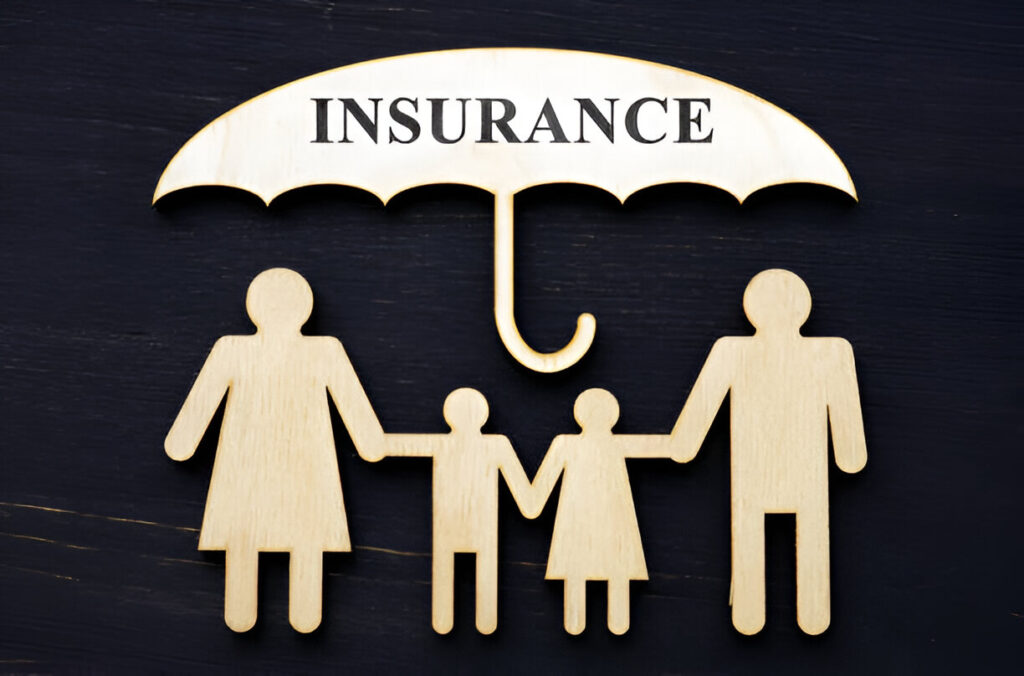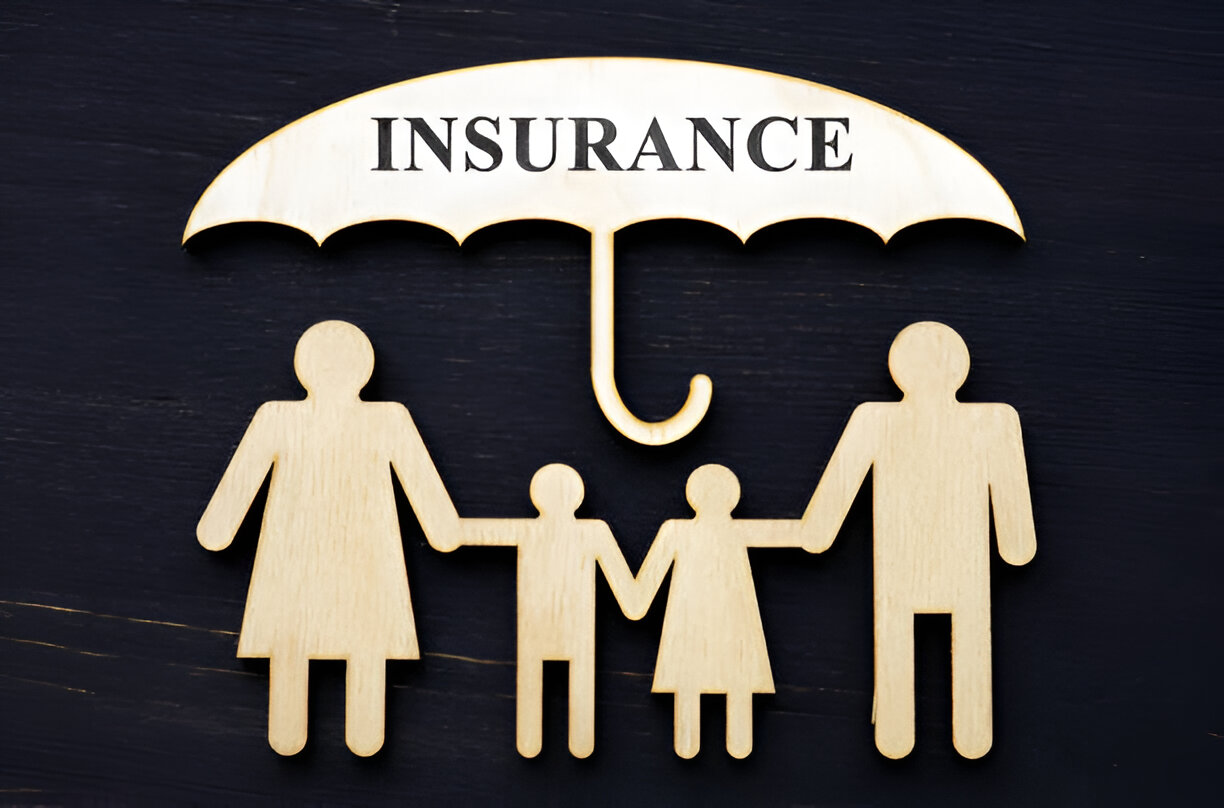“Types of Insurance in the USA: Complete Guide for 2025”
1. Health Insurance in the USA
Health insurance is perhaps the most critical type of coverage in the United States. Unlike many countries where public healthcare covers most needs, the U.S. healthcare system is largely privatized. Without insurance, a simple doctor’s visit can cost hundreds of dollars, and a hospital stay can run into tens of thousands. For this reason, health insurance is often seen not as a luxury but as a necessity.
There are two main categories of health insurance: public programs and private insurance. Public programs include Medicare, a federal system for people aged 65 and older or those with disabilities, and Medicaid, which provides coverage for low-income individuals and families. Many Americans also rely on the Affordable Care Act (ACA) marketplace, which allows people to buy standardized plans and sometimes qualify for government subsidies based on income.




Private health insurance, often provided by employers, remains the most common form of coverage. Companies like Blue Cross Blue Shield, UnitedHealthcare, Aetna, and Cigna dominate the market. Employer-sponsored insurance usually covers doctor visits, hospitalizations, prescriptions, mental health, and preventive care. Employees typically share the cost of monthly premiums with their employer, making it more affordable than buying insurance individually.
International students and immigrants in the U.S. also need health insurance, often through university-sponsored plans or private providers. Coverage is essential not just for emergencies but also for meeting visa requirements.
One important concept in U.S. health insurance is deductibles and co-pays. A deductible is the amount you pay before insurance begins covering costs, while co-pays are small amounts due at the time of service. These costs can vary widely depending on the plan.
In short, health insurance in the U.S. is a shield against financial disaster. With medical costs ranked among the highest in the world, no individual or family can risk living without coverage. Beyond financial protection, it also provides access to better hospitals, doctors, and preventive care programs, ensuring long-term well-being.

2. Life Insurance in the USA
Life insurance plays a unique role in the American insurance landscape, offering financial security for loved ones in the event of an untimely death. Unlike health or auto insurance, life insurance is not legally required, but millions of Americans consider it essential, especially those with families or dependents.
There are two primary types of life insurance: term life insurance and whole life insurance. Term life provides coverage for a fixed period, such as 10, 20, or 30 years. If the policyholder dies within this term, beneficiaries receive the death benefit. Term life is more affordable and straightforward, making it popular among younger families. Whole life, on the other hand, provides lifelong coverage and includes a cash-value component that grows over time. It’s often more expensive but acts as both insurance and an investment.
Life insurance is particularly valued by families with children, homeowners with mortgages, or business owners who want to ensure stability if something happens to them. Many employers in the U.S. offer group life insurance policies as part of employee benefits, though these are often smaller amounts and supplemental private policies are common.
Premiums for life insurance depend on factors like age, health, lifestyle, and coverage amount. Non-smokers, for instance, pay significantly lower premiums than smokers. Applicants typically undergo a medical exam before approval. However, some modern insurers now offer no-exam policies at higher costs for convenience.
Another growing area is universal life insurance, which allows flexibility in premiums and death benefits while offering an investment-like cash component. People often use these policies for retirement planning or estate management.
In a society where financial planning is deeply ingrained, life insurance is not just about preparing for the unexpected but about providing peace of mind. Knowing that children’s education, mortgages, or family living expenses will be covered even in one’s absence gives policyholders a sense of security.
For immigrants and international professionals, life insurance also provides reassurance that their families back home won’t suffer financially if tragedy strikes. In essence, life insurance in the U.S. is about love, responsibility, and long-term planning.

3. Auto Insurance in the USA
Auto insurance is one of the few types of insurance that is legally required in almost every U.S. state. Driving without it can lead to hefty fines, license suspension, or even jail time. The requirement reflects how common car ownership is in the U.S.—with sprawling cities and limited public transportation in many regions, cars are a necessity for daily life.
At its core, auto insurance protects drivers financially in case of accidents. The most basic type of coverage is liability insurance, which covers injury or damage caused to others when you are at fault. Every state sets minimum liability requirements, though most experts recommend higher coverage than the legal minimum.
Beyond liability, many drivers opt for additional coverage types. Collision insurance pays for repairs to your own car after an accident, regardless of fault. Comprehensive insurance covers non-accident-related damages such as theft, vandalism, or natural disasters. Uninsured/underinsured motorist coverage protects drivers if the other party in an accident has little or no insurance.
Premiums vary based on a wide range of factors: age, gender, driving history, location, type of vehicle, and even credit score. Young drivers, particularly teenagers, tend to pay the highest rates because they are statistically more likely to be involved in accidents. Luxury cars and sports cars also cost more to insure compared to regular sedans.
Insurance companies also offer discounts for safe driving records, multiple policies (bundling auto and home insurance), or safety features like airbags and anti-theft devices. Some insurers even use telematics—tracking devices that monitor driving habits—to reward safe drivers with lower premiums.
For most Americans, auto insurance is not just about meeting a legal requirement; it’s about protecting themselves against financial loss. Car accidents are common, and medical bills, repair costs, and legal claims can quickly spiral into tens of thousands of dollars. With the right policy, drivers have peace of mind knowing they are financially covered, whether it’s a fender bender or a major accident.
For international students and immigrants, auto insurance is equally vital. Most U.S. car rental companies won’t allow rentals without proof of insurance, and owning a car without it is illegal. In short, auto insurance is both a legal obligation and a practical necessity in America’s car-driven lifestyle.

4. Homeowners Insurance in the USA
Owning a home is one of the biggest investments an American family makes, and homeowners insurance is designed to protect that investment. In most cases, it is not optional—mortgage lenders require homeowners to carry insurance as long as they are paying off a loan. Even for those who own their homes outright, insurance is vital for safeguarding both the structure and the contents within.
A standard homeowners policy covers three main areas: the structure of the home, personal belongings, and liability protection. If a fire, storm, or burglary damages your property, the policy helps pay for repairs or replacements. Coverage also extends to personal items such as furniture, electronics, and clothing, whether they’re inside the house or stolen while traveling. Liability coverage protects homeowners if someone is injured on their property and decides to sue.
Policies typically also cover additional living expenses (ALE). For example, if a fire makes a house uninhabitable, the insurance company pays for temporary accommodation and meals until the home is restored.
Premiums depend on factors like location, home value, construction type, and even proximity to fire hydrants. Homes in hurricane-prone Florida or wildfire-prone California often face higher premiums. Importantly, standard policies do not cover floods or earthquakes; separate policies must be purchased for those risks.
Homeowners are encouraged to create home inventories—detailed lists of their belongings with photos and receipts. This helps ensure fair compensation in the event of a claim.
In America, where natural disasters and accidents are unpredictable, homeowners insurance offers more than financial coverage. It provides peace of mind, ensuring families don’t face devastating financial losses from events beyond their control.

5. Renters Insurance in the USA
Not everyone owns a home, and millions of Americans live in rented apartments or houses. For them, renters insurance is one of the most affordable yet valuable forms of coverage. While landlords insure the building structure, they do not cover tenants’ personal belongings. Renters insurance fills this gap.
A renters policy protects personal possessions such as electronics, furniture, clothing, and even jewelry against perils like fire, theft, vandalism, or water damage from burst pipes. It also includes liability protection, covering medical expenses and legal costs if a guest is injured inside the rented space.
Another important feature is loss of use coverage, which pays for temporary living expenses—like hotel bills—if the apartment becomes uninhabitable due to covered damage.
The biggest advantage of renters insurance is affordability. In most U.S. states, policies cost between $15 and $25 per month—a small price for the security of thousands of dollars’ worth of protection. Despite this, surveys show that many renters skip coverage, wrongly assuming their landlord’s policy covers them.
Renters insurance also travels with you. If your laptop is stolen from a café or luggage lost during travel, the policy often provides compensation.
For international students and young professionals in the U.S., renters insurance is especially useful. Many universities and landlords even make it a lease requirement. In essence, renters insurance is a financial safety net for tenants, ensuring they don’t have to start from scratch if disaster strikes.
6. Disability Insurance in the USA
While health insurance covers medical costs, it does not replace income if someone is unable to work. That’s where disability insurance comes in. It ensures you still have a paycheck if illness or injury prevents you from earning.
There are two main types: short-term disability (STD) and long-term disability (LTD). STD typically covers a few weeks to six months, replacing 50–70% of income. LTD, on the other hand, can last years—or even until retirement age.
For many Americans, their most valuable asset is not their home but their ability to earn income. Disability insurance protects this asset. It is especially critical in a country where medical issues, accidents, or chronic illnesses can sideline people for extended periods.
Premiums are determined by occupation, age, income, and health history. Jobs considered dangerous (construction, law enforcement) tend to have higher rates. Many employers offer group disability insurance as part of their benefits, but individuals can also purchase private policies for additional coverage.
The Social Security Administration also runs Social Security Disability Insurance (SSDI), a federal program that provides benefits to those with severe disabilities. However, qualifying for SSDI is challenging, and the payments are often not enough to maintain one’s standard of living.
In summary, disability insurance is about protecting financial stability when health crises strike. It allows people to continue paying rent, mortgages, and daily expenses, ensuring that illness or injury doesn’t spiral into financial ruin.

7. Travel Insurance in the USA
Travel is a part of modern life, whether for business, study, or leisure. But trips come with risks—flight cancellations, lost baggage, or sudden illness abroad. Travel insurance addresses these uncertainties.
A typical policy covers trip cancellation or interruption, reimbursing non-refundable expenses like flights or hotel bookings if a trip is canceled due to illness, injury, or emergencies. It also includes baggage coverage, compensating for lost, stolen, or delayed luggage.
Perhaps the most critical feature is emergency medical coverage. Many U.S. health insurance policies don’t extend internationally, leaving travelers vulnerable to massive bills overseas. Travel insurance ensures access to care, including emergency evacuation back to the U.S. if necessary.
For international visitors coming to America, travel insurance is equally important. U.S. healthcare costs are among the highest in the world, so having temporary coverage is crucial. Many universities require international students to carry insurance that includes travel benefits.
The cost of travel insurance is relatively low, usually 4–10% of the total trip cost. For frequent travelers, annual plans are available.
In short, travel insurance provides financial protection and peace of mind. It turns potential trip disasters into manageable inconveniences, allowing travelers to focus on experiences rather than worries.
8. Pet Insurance in the USA
Pets are family in many American households, and their medical care can be surprisingly expensive. Pet insurance has emerged as a growing industry to help cover veterinary costs.
Policies usually cover accidents, illnesses, surgeries, medications, and diagnostic tests. Some plans also include wellness coverage for vaccinations and preventive care. With veterinary treatments costing thousands of dollars, especially for surgeries or chronic conditions, pet insurance ensures owners don’t have to choose between finances and their pet’s health.
Premiums vary based on pet type, breed, age, and coverage level. Dogs generally cost more to insure than cats, and purebred animals can carry higher premiums due to genetic health risks.
Unlike human health insurance, pet policies often require owners to pay upfront and then file for reimbursement. This system can be challenging for some, but it still significantly reduces long-term expenses.
The popularity of pet insurance is rising rapidly. According to recent data, over 4 million pets in the U.S. are now covered. With more people treating pets as family, the demand for affordable veterinary care is fueling industry growth.
In essence, pet insurance offers peace of mind for pet parents, ensuring beloved companions receive the best medical care without financial strain.

9. Business Insurance in the USA
Businesses, whether small startups or large corporations, face countless risks—lawsuits, accidents, natural disasters, or cyberattacks. Business insurance provides protection to keep companies financially secure.
The most common form is General Liability Insurance, which covers legal expenses if a customer is injured or property is damaged. Almost every business needs this coverage. Property insurance protects buildings, inventory, and equipment against fire, theft, or disasters.
For companies with employees, Workers’ Compensation Insurance is mandatory in most states. It covers medical bills and lost wages if an employee is injured at work.
Modern businesses also face new risks like cybercrime. Cyber insurance protects against data breaches, ransomware attacks, and lawsuits related to stolen customer data.
Business insurance is tailored to industry needs. A restaurant, for example, may need food contamination coverage, while a construction company might require equipment breakdown insurance. Premiums depend on the size of the company, number of employees, industry risks, and location.
Having business insurance not only protects finances but also builds trust with customers, investors, and partners. It signals responsibility and professionalism.
In the fast-paced U.S. economy, where lawsuits are common and risks are high, business insurance is not optional—it is a strategic safeguard for survival and growth.
10. Specialized Insurance in the USA
Beyond the major categories, there are specialized forms of insurance tailored to unique risks.
- Flood Insurance: Required in high-risk flood zones, available through FEMA’s National Flood Insurance Program. Standard homeowners policies don’t cover floods.
- Earthquake Insurance: Essential in earthquake-prone states like California and Alaska.
- Umbrella Insurance: Provides extra liability protection beyond auto, renters, or homeowners policies. Useful for high-net-worth individuals.
- Long-Term Care Insurance: Covers expenses of nursing homes, assisted living, or in-home care, which regular health insurance doesn’t include.
These policies address specific gaps in standard coverage. For example, a homeowner in Florida may need both hurricane coverage and flood insurance, while a wealthy entrepreneur might opt for umbrella insurance to protect against lawsuits.
Though specialized, these insurances are crucial for individuals in high-risk environments. They ensure comprehensive protection, preventing catastrophic financial losses that standard policies may not cover.

